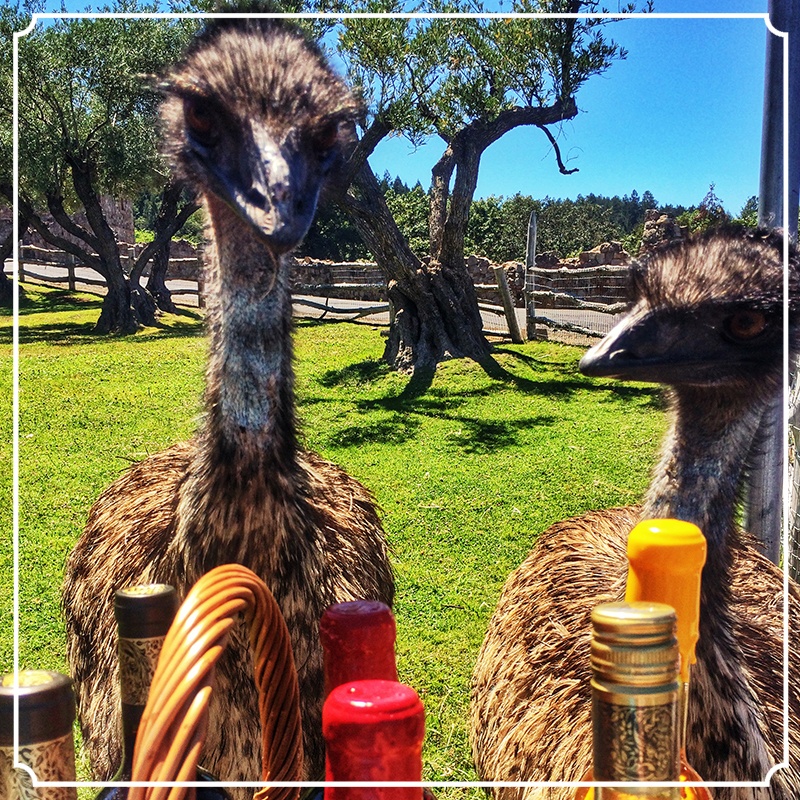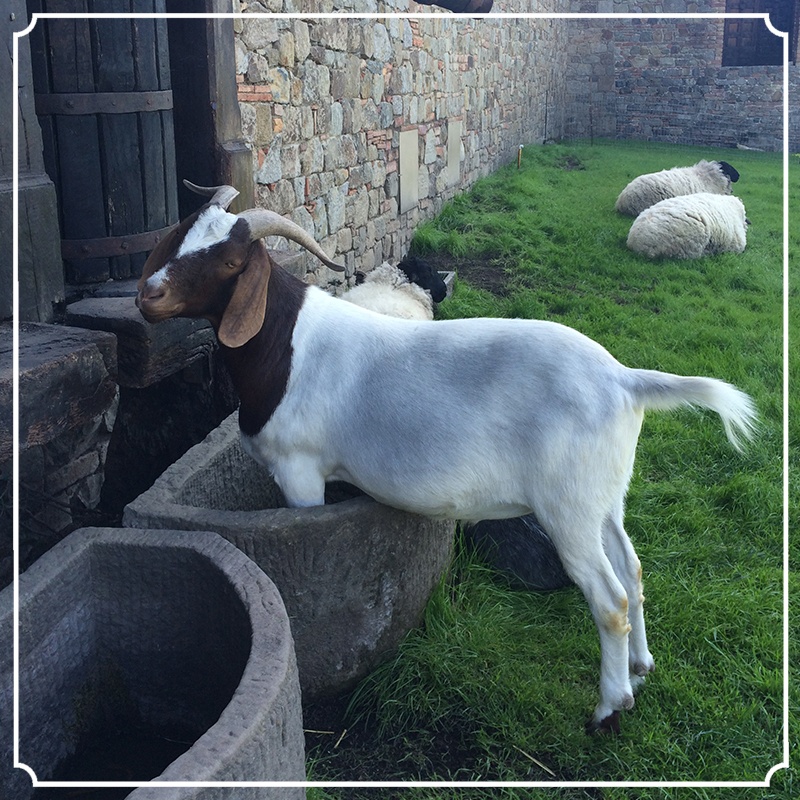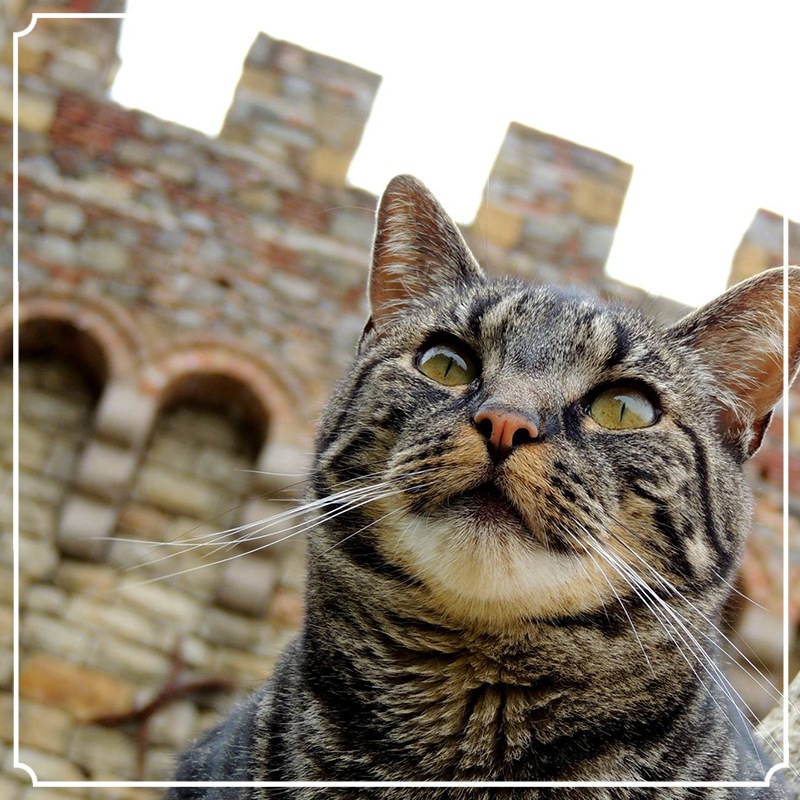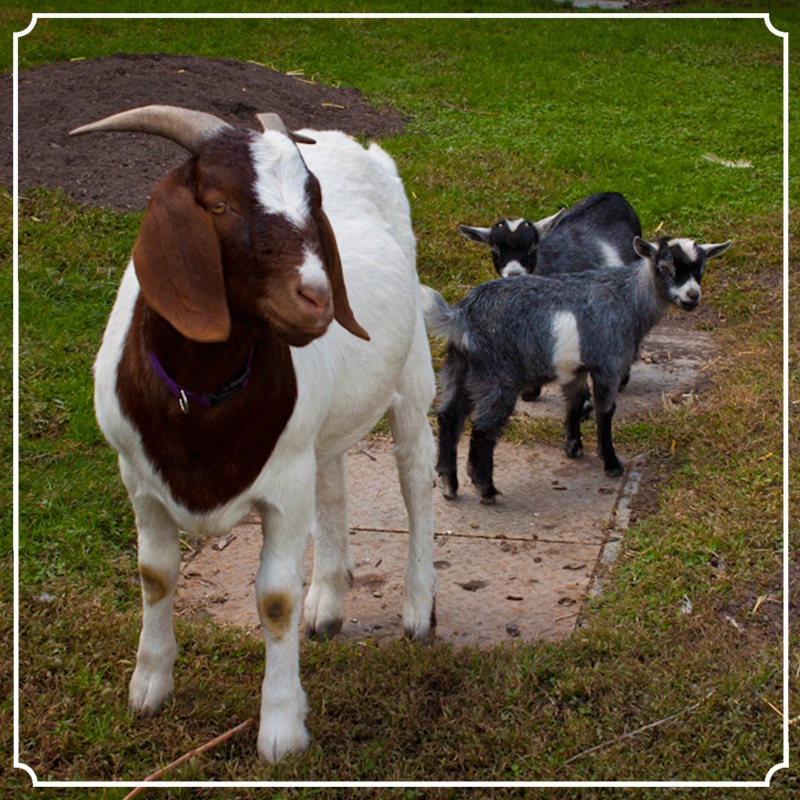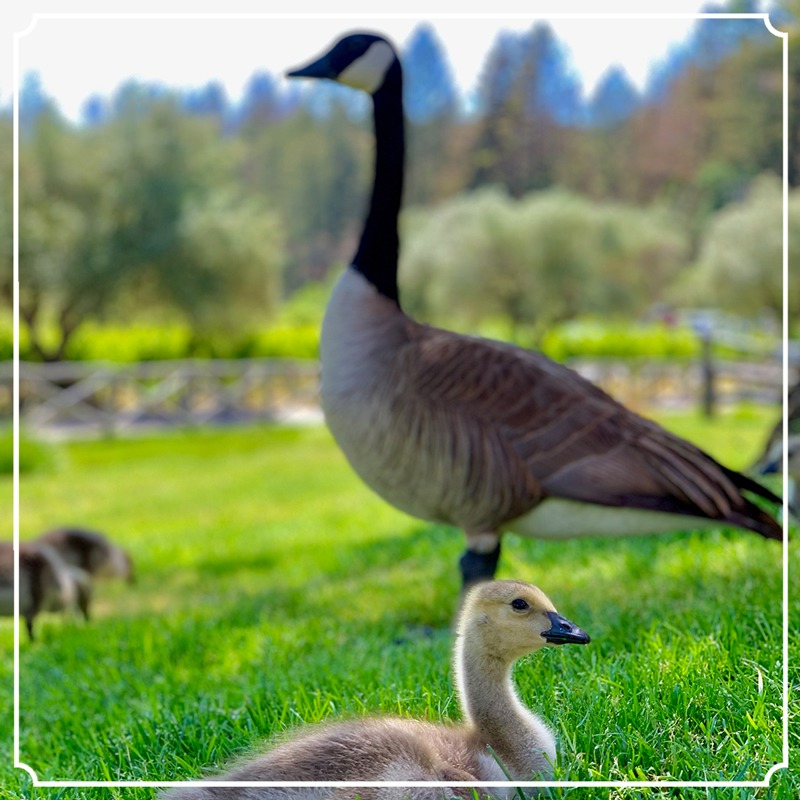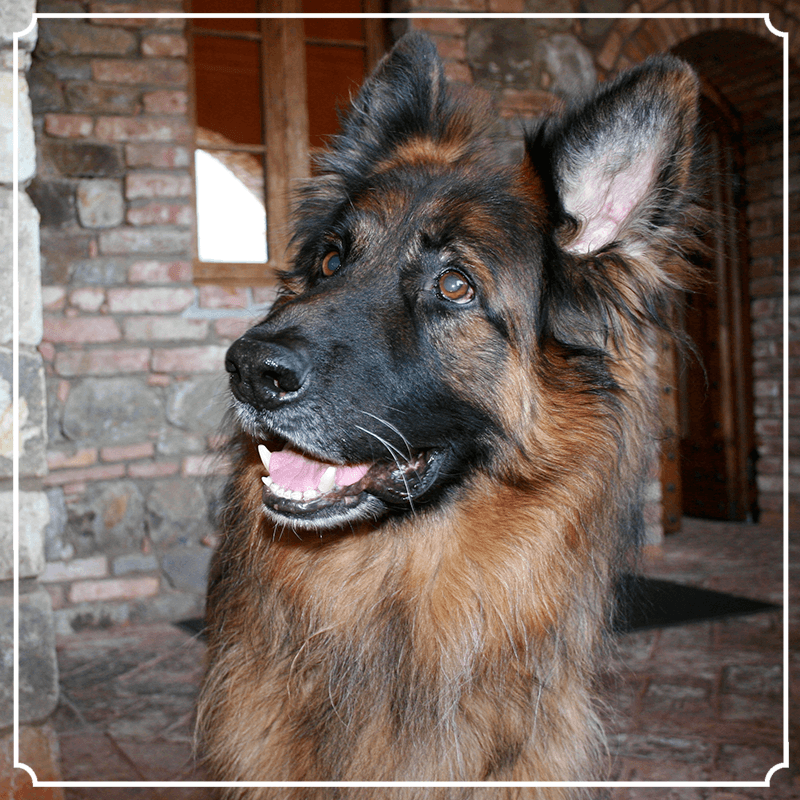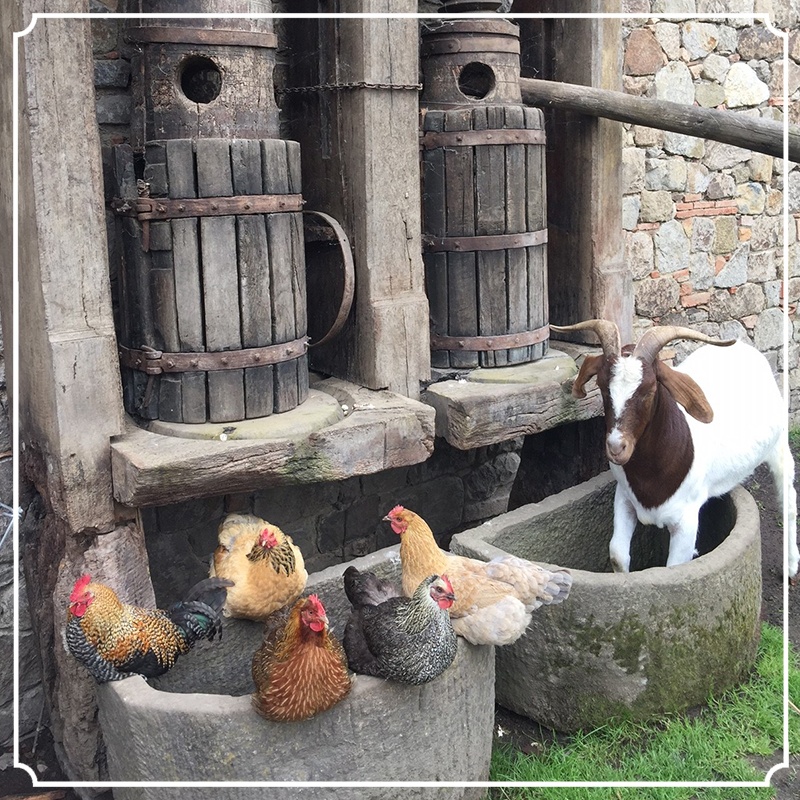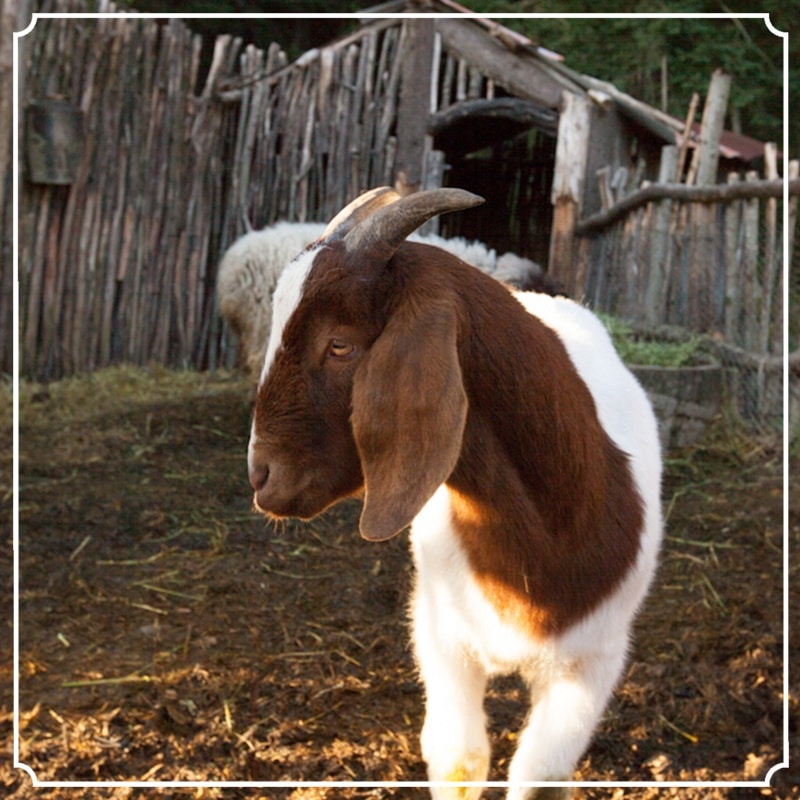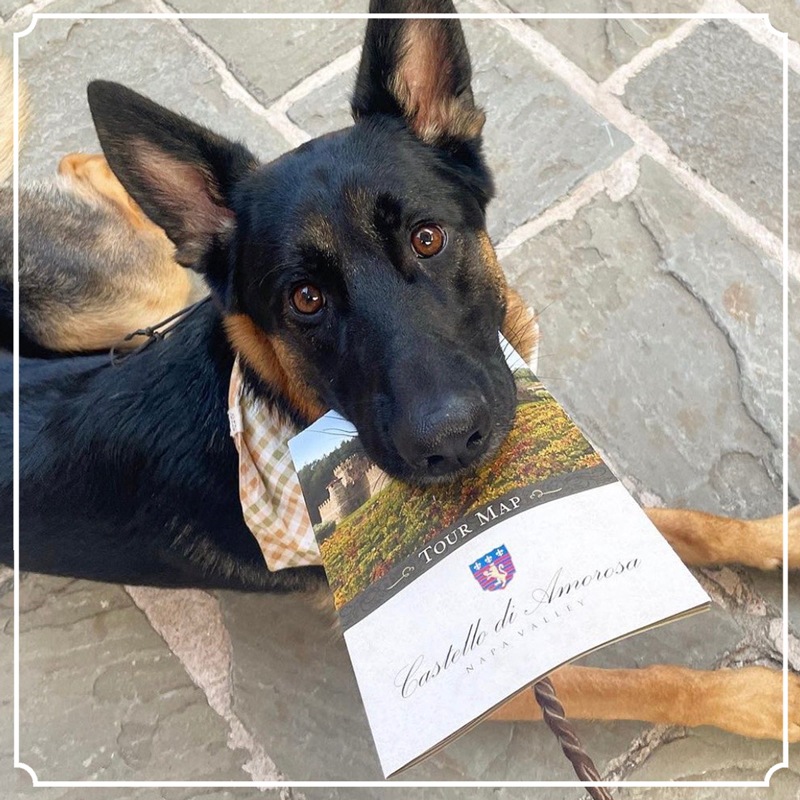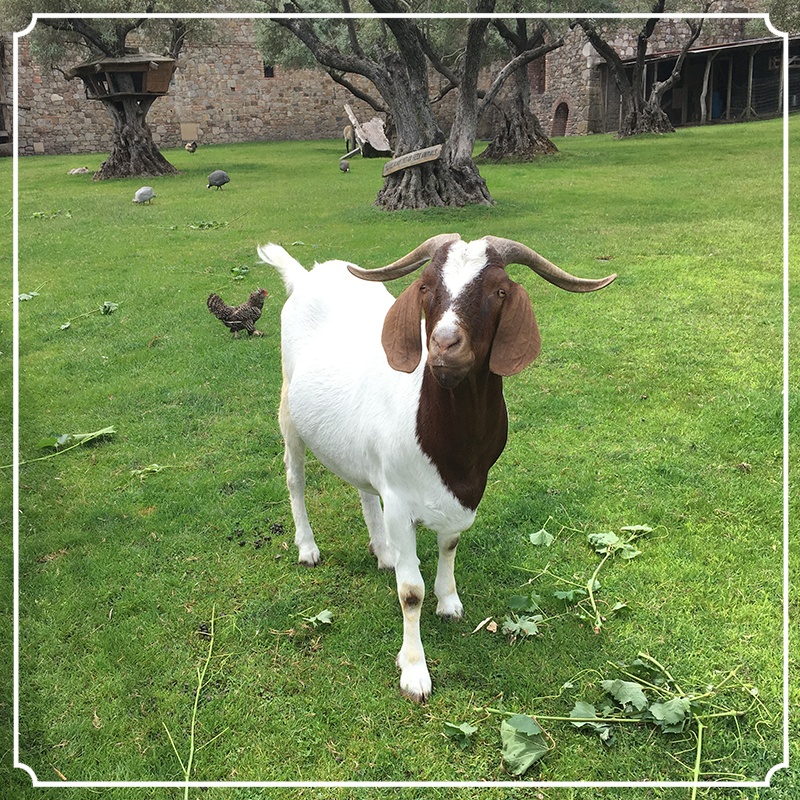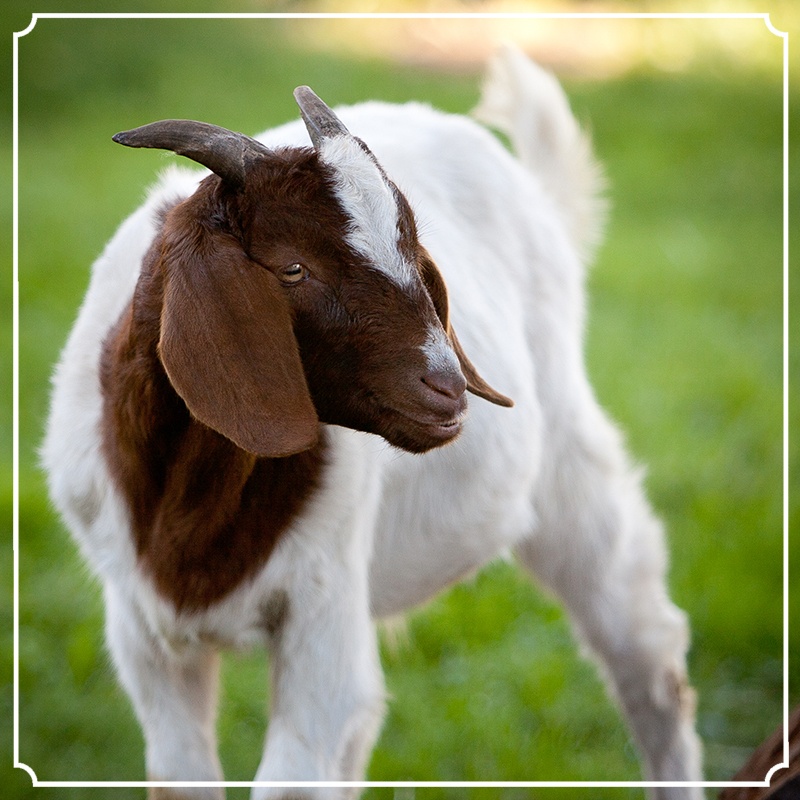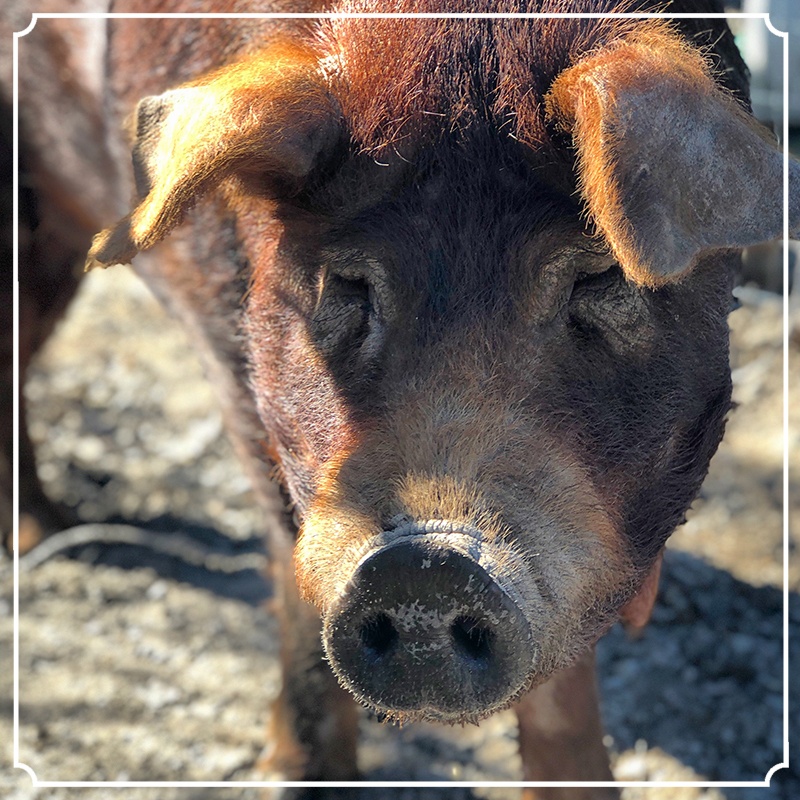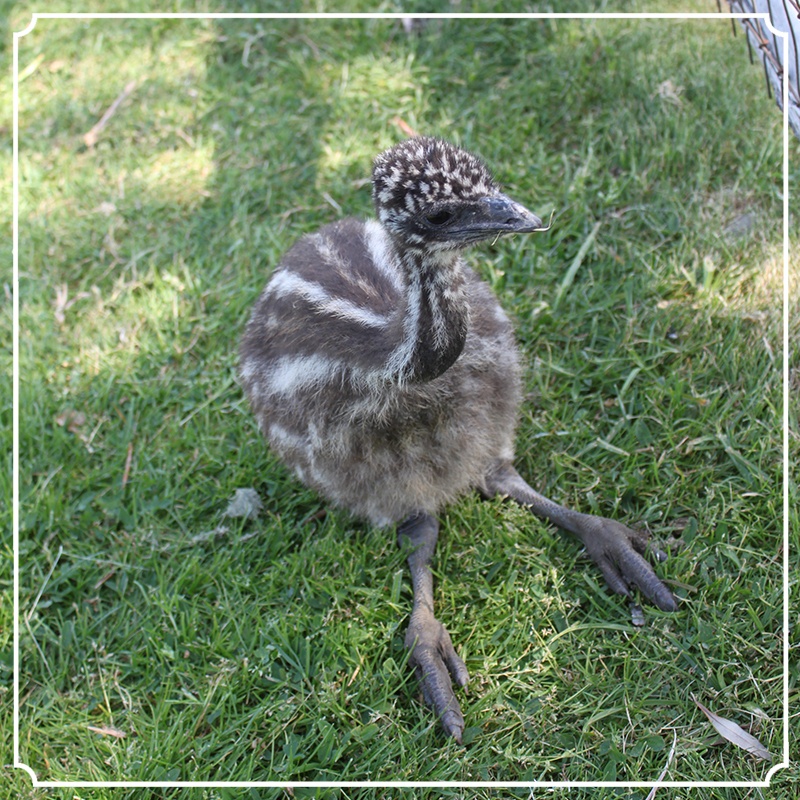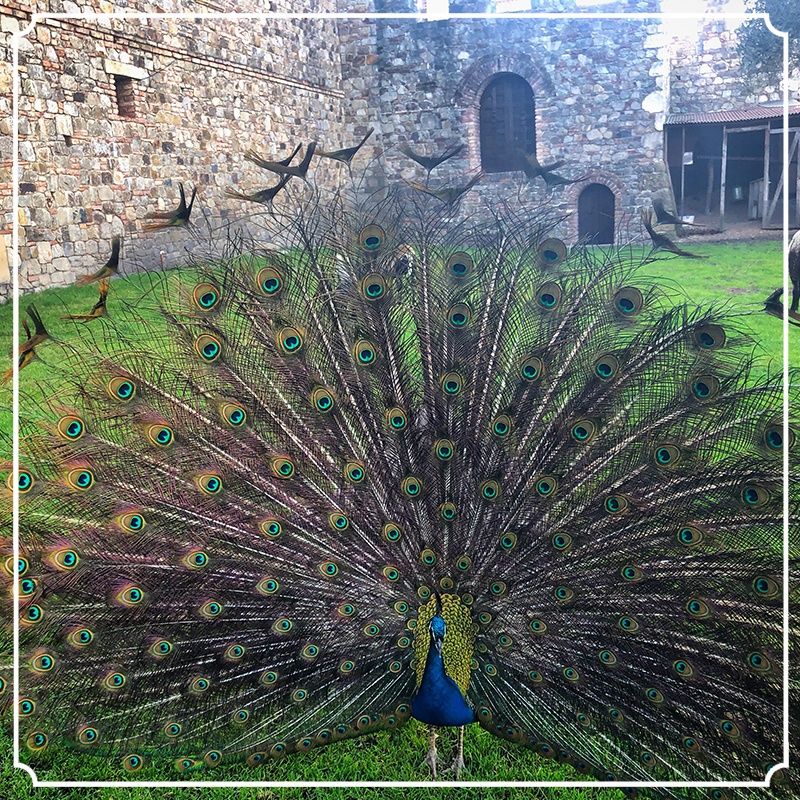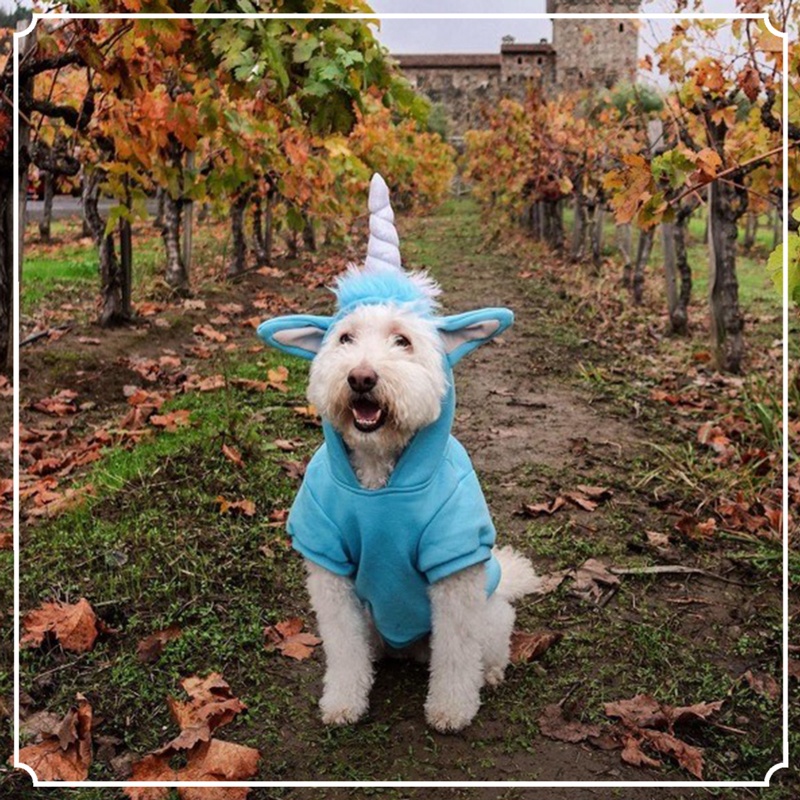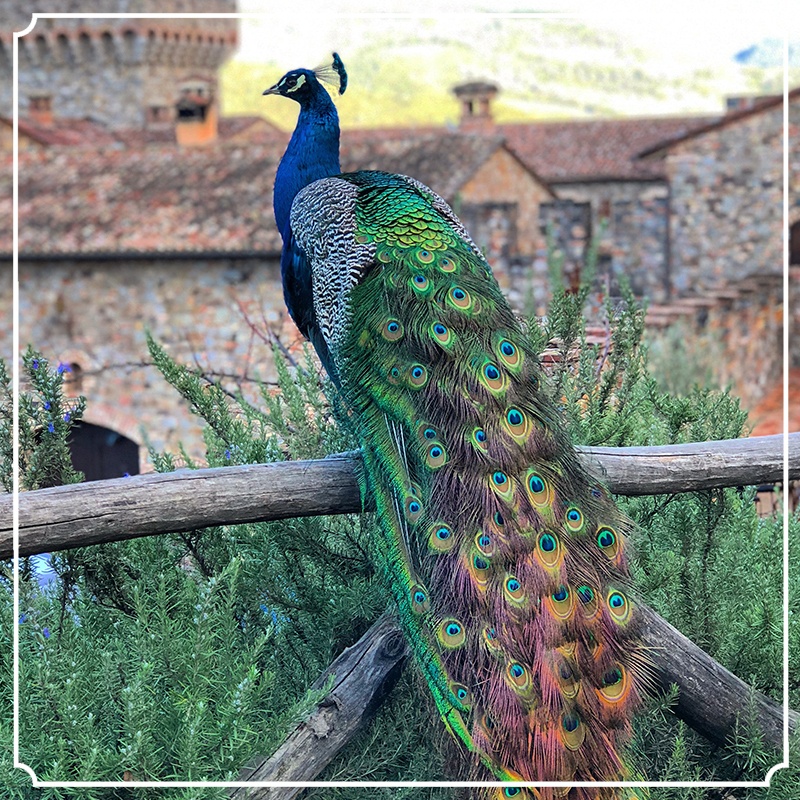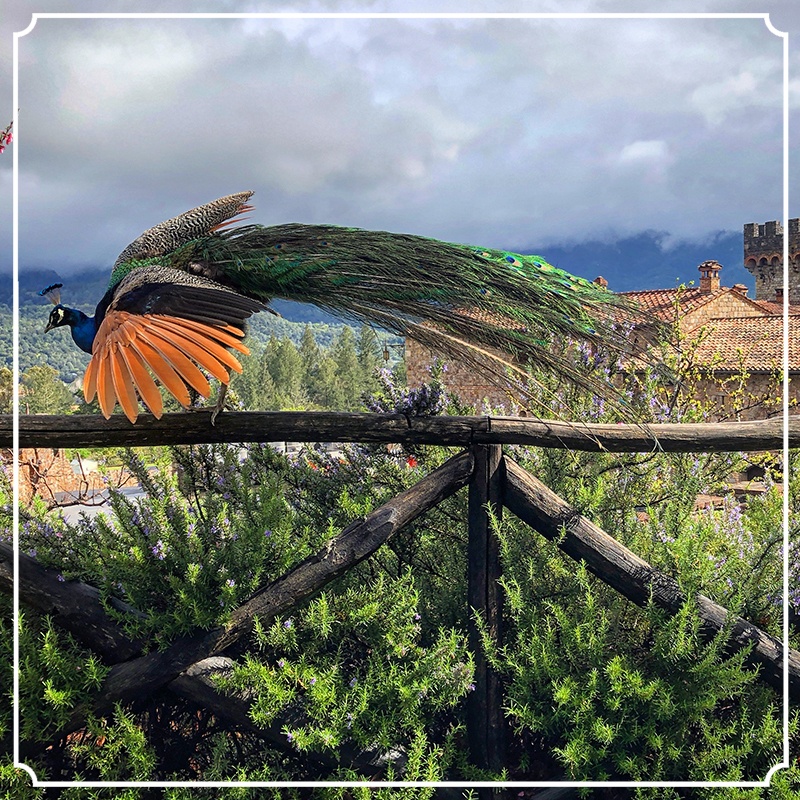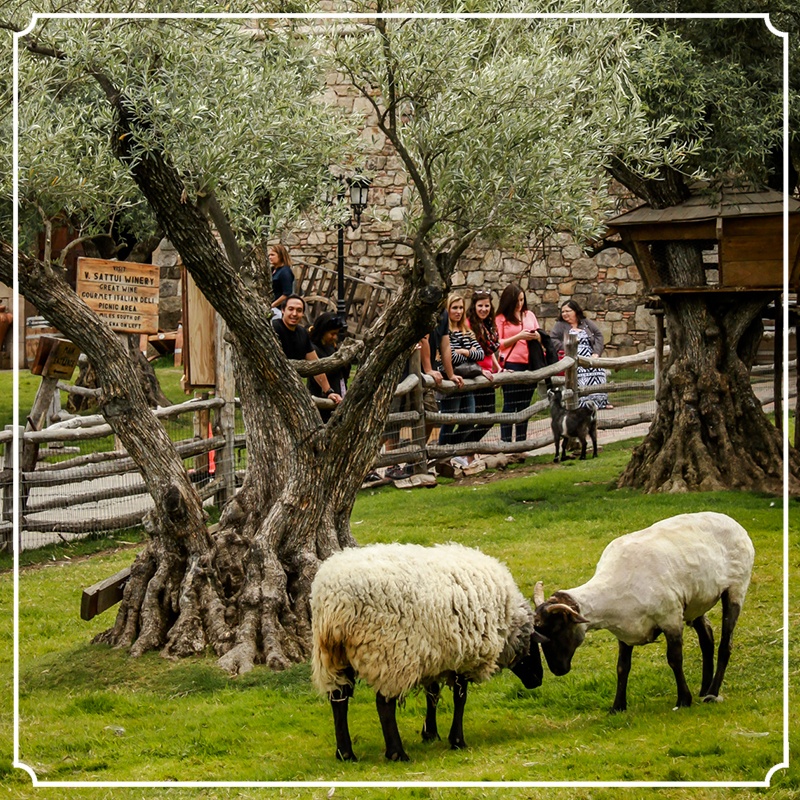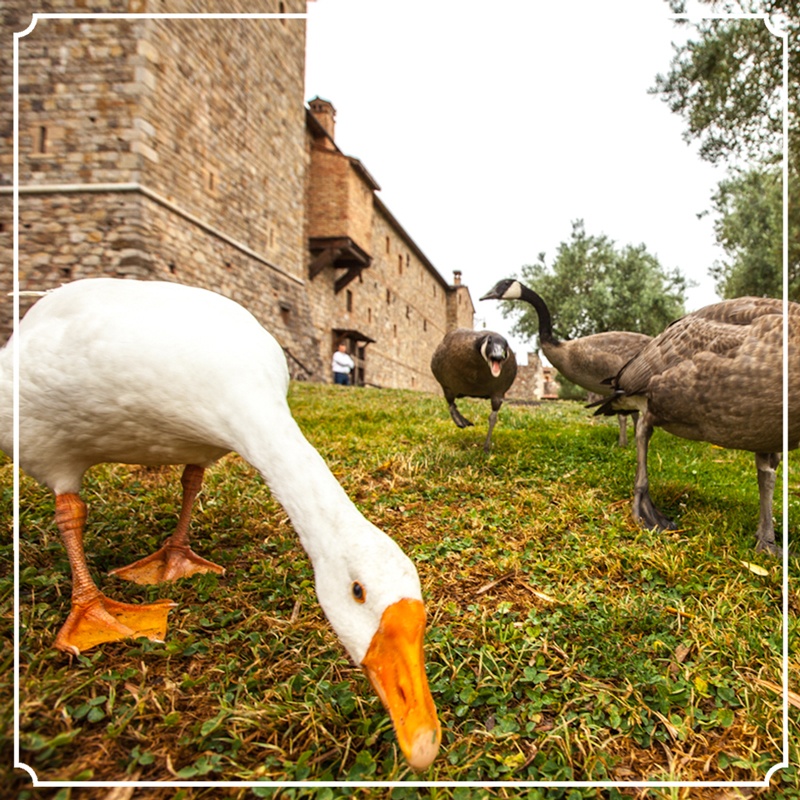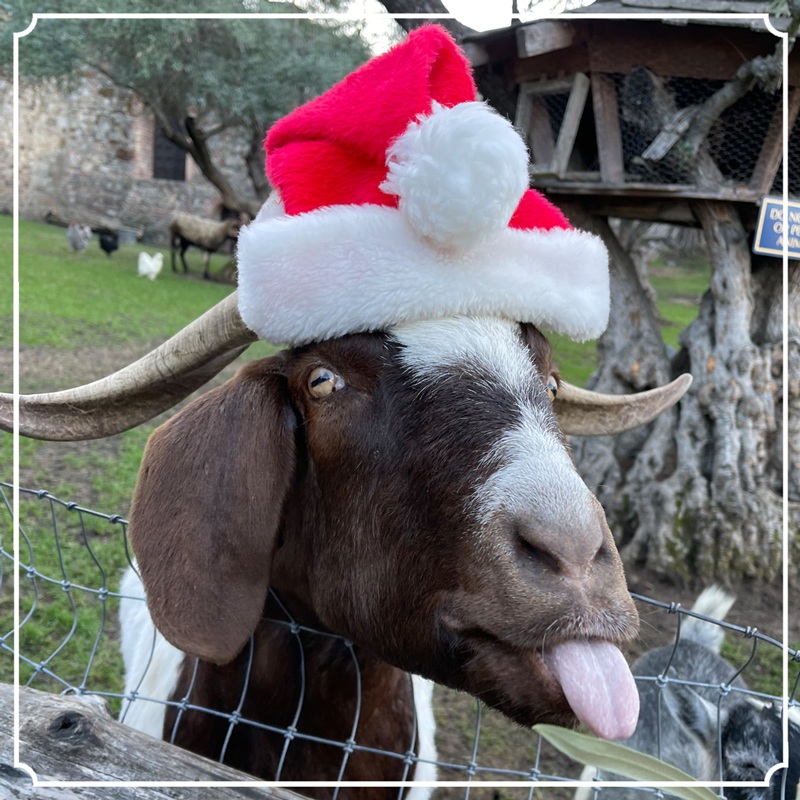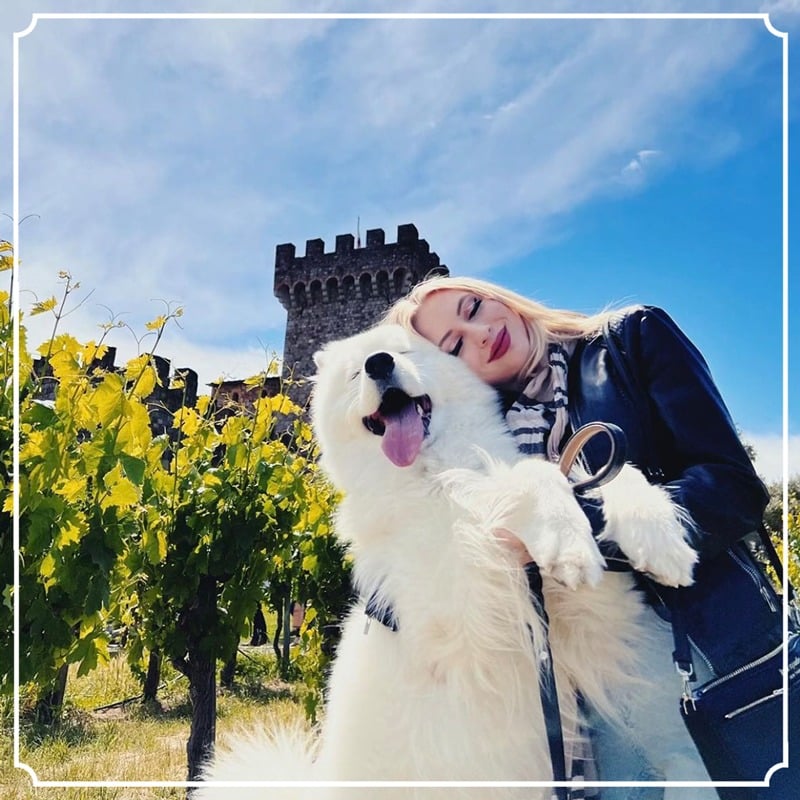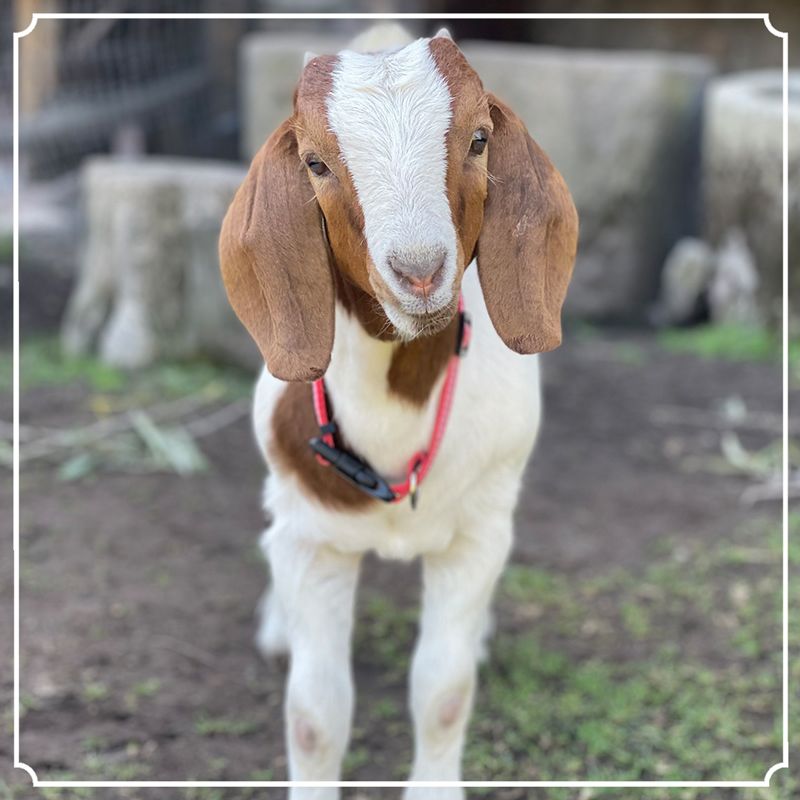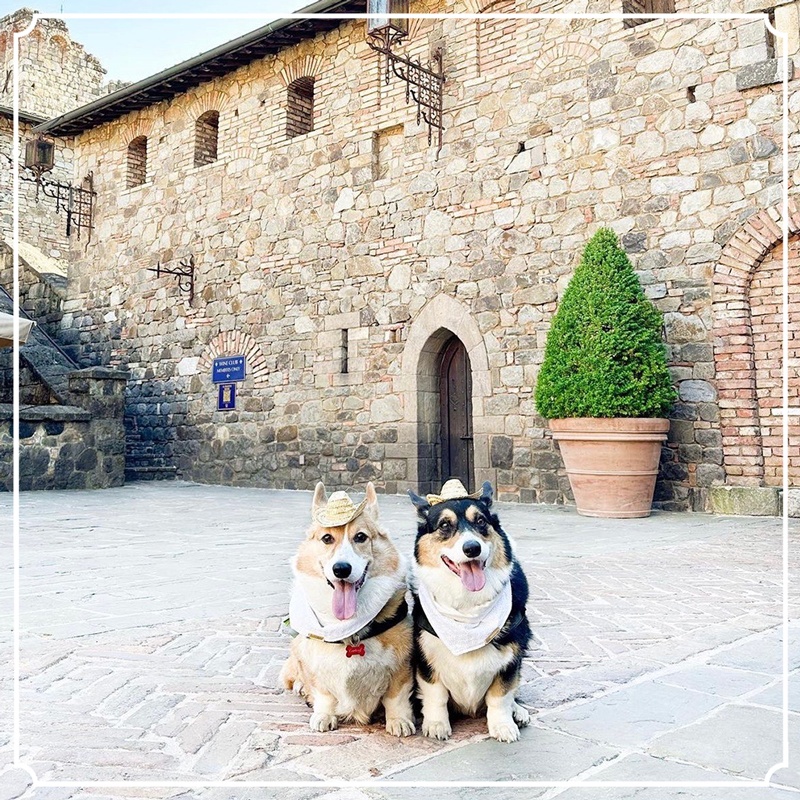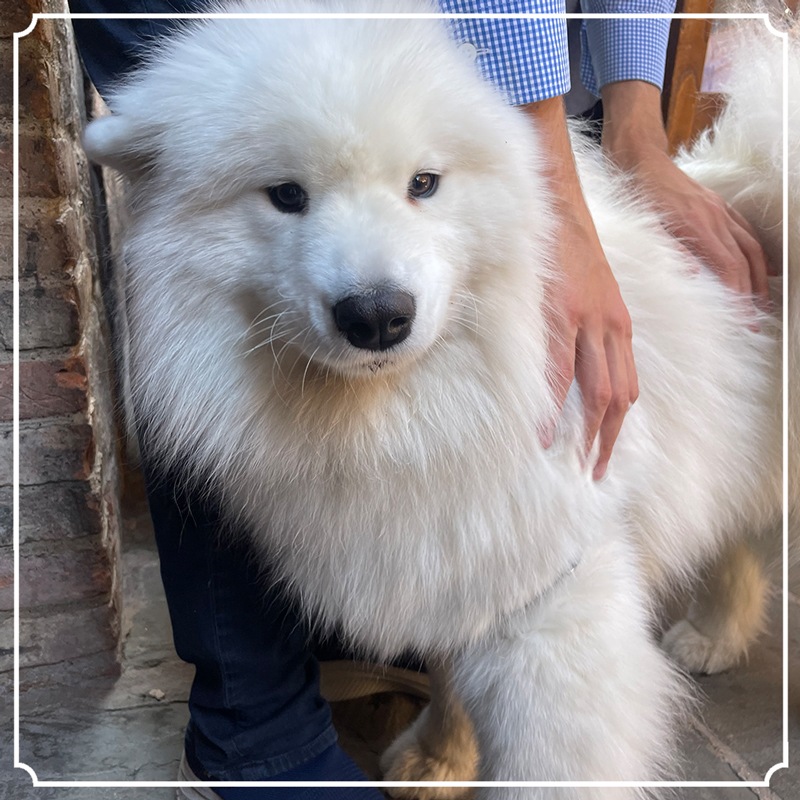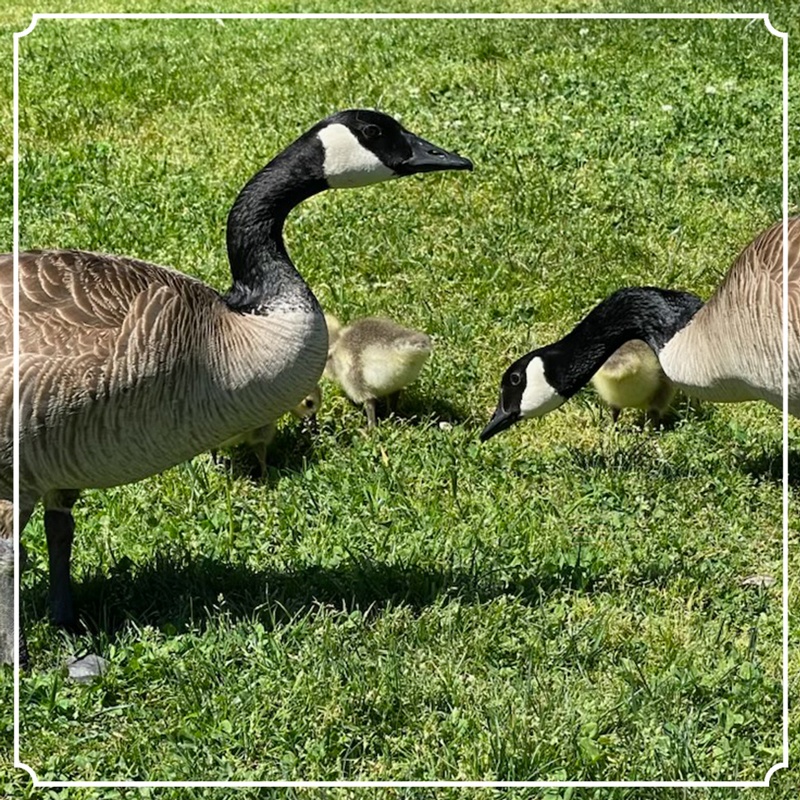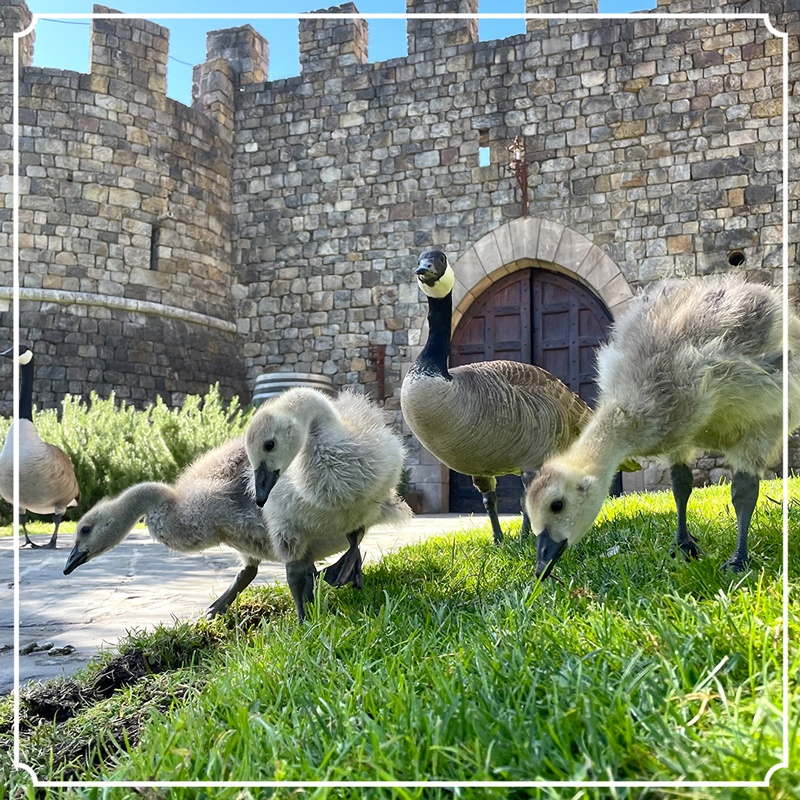
Meet The Animals
Meet the unique animals of Castello di Amorosa. These animals can be found both around the Castle property and in their pen, located in front of the tasting room. From our famous Goat Giacomo to Peacocks around the Castle, there is animal fun for all ages. Visit our Castle winery with the finest animals in all of Napa Valley!
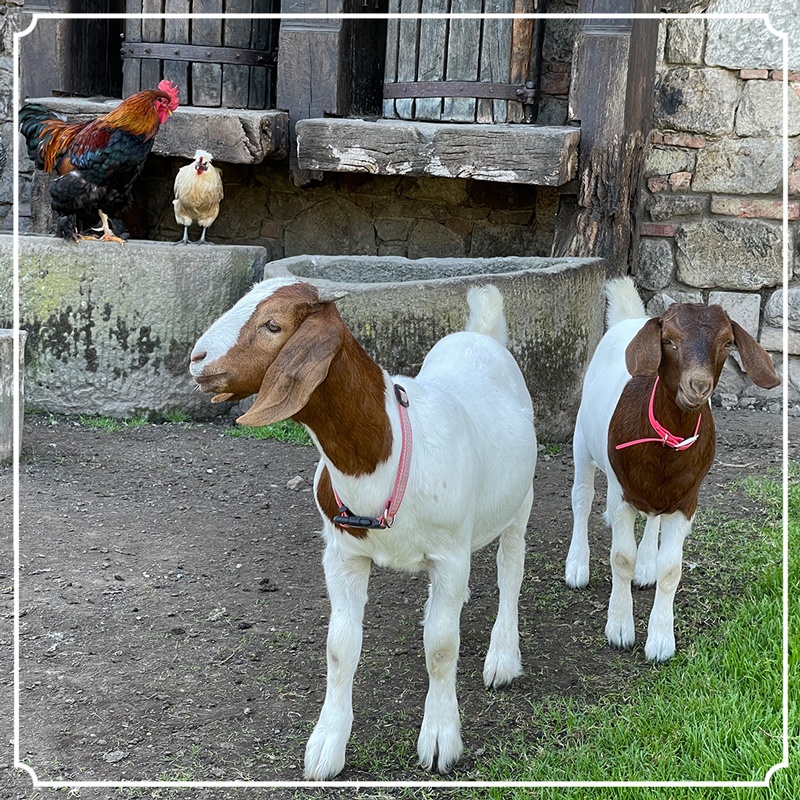
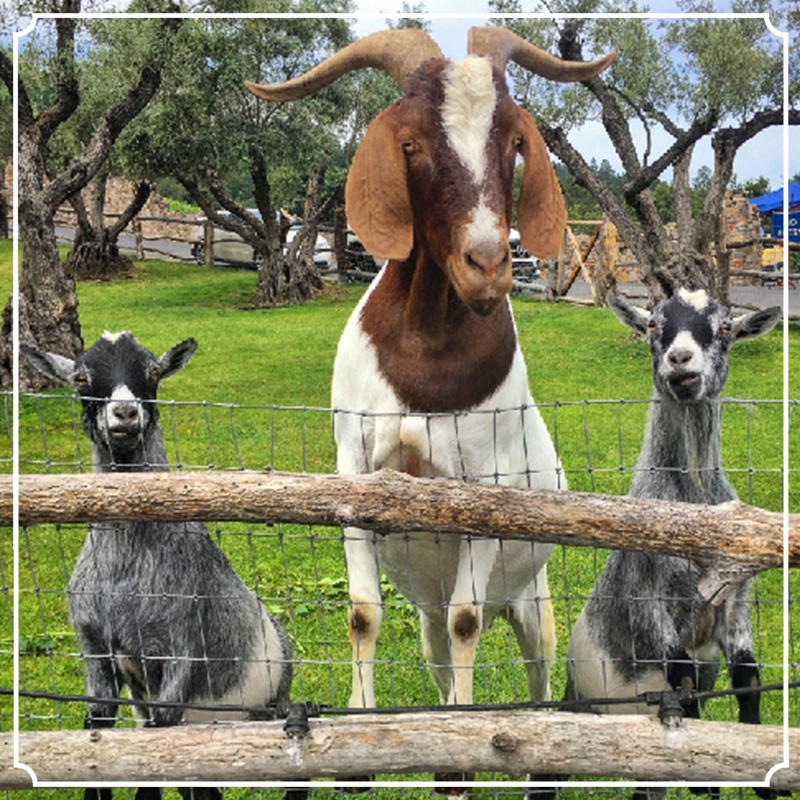
GIACOMO & BELLA
Giacomo II & Bella – New Baby Goats!
Meet Giacomo II & Bella! After a few tough weeks with the herd these two are fully integrated in Castle culture. Come by soon to visit Bella & Giacomo II.
Legend has it, the original Giacomo is the most photographed goat in the world. He has been warming hearts with his cute smile and chomping olive branches since he arrived in 2010. . He was “appointed” to eat the grass between the vines, but we found the shrubs, vines and olive trees were his favorite target. He was subsequently moved to the farm where he now has lots of pals including his beloved younger twin brothers (Vincenzo & Paolo), the emu couple, the lovely lady hens and Romeo the Peacock who tries to steal the show. But Giacomo wins while stealing visitors hearts every day.
How can you resist that billy goat smile & floppy ears… and they both loved to be photographed. Take a snapshot of Giacomo or Bella and post it on your Instagram page with the hashtag: #CastellodiAmorosaGOAT while you are there check out his other famous photoshoots!
Goat Facts
- We asked Giacomo to clean up the grass- he ate the olive branches- we thought we bought a lawn mower.
- Goats have this weird inclination to stand on Cows – Lucky we don’t have any cows.
- It’s a popular belief that goats eat tin cans. That’s not true. They are browsers and eat everything but the can.
- Goats do not prefer to stay alone. They like company. They are frequently companions to race horses, due to their calming effect.
- Goats lack upper front teeth. Instead of teeth they have a very hard gum pad. Please don’t test this!
- Goats can be taught their name and to come when called.
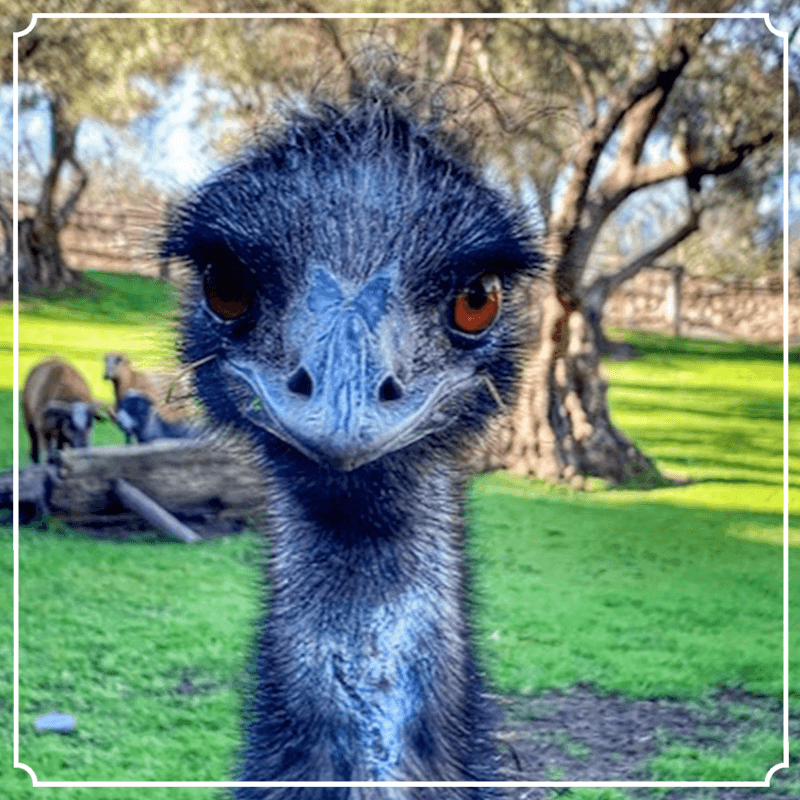
EMU
Emu’s
These amazing soft-feathered birds are flightless but they more than make up for it in personality. Emu’s are members of the ratite family which also includes ostriches, cassowaries and rheas. They are among the largest birds in the world and found primarily in Austrailia, New Guinea, Indonesia and the Philippines. Typically they live in grasslands, savannas and forrests. Emu’s are known for their vast array of eating choices including, fruits, seeds, plant shoots, smalll animals and insects.
Emu Facts
- Emu’s lay large emerald-green eggs in expansive ground nests.
- The only bird with calf muscles.
- They are able to run about 30 miles per hour.
- Emu’s drink an impressive amount of water, anywhere from 2.5 to 5 gallons of water daily.
- They weigh anywhere from 66 to 100 pounds.
- Emu’s can live up to 35 years in captivity.
- Predators of the Emu include dingoes and wedge-tailed eagles.
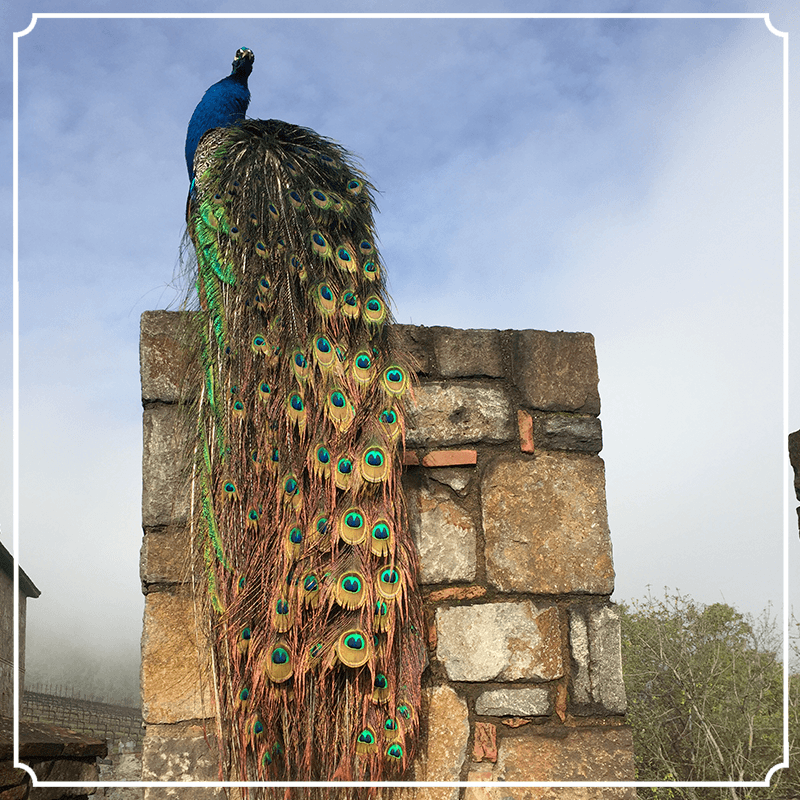
PEACOCK
Peacock
Check out of Peacocks! Legend has it, they are the most beautiful birds in the world. Male peafowl are referred to as peacocks and female peafowl as peahens. Although peafowl of either sex are often referred to as “peacocks”. The iridescent colouration and large “train” of peacocks have been the subject of serious scientific debate. Darwin suggested they served to attract females and the showy features of the males had evolved by sexual seletion. Recently a theory wwas proposed that these features act as honest signals of the males’ fitness.
What exactly makes the Peacock feathers so bright and vibrant? Its actually microscopic “cystal like structures” that reflect different wavelengths of light depending on how they’re spaced, resulting in bright fluorescent colors. Hummingbirds and shimmering butterflies have mastered a similar visual effect on their own wings.
Peacock Facts
- A family of peafowl is called a “bevy”.
- Male peachicks don’t start growing their showy trains until about age three.
- Considered a major delicacy in Medieval times
- Peacocks are known to fake their mating calls, by pretending they are mating when they are not. The males can convince females they are more sexually active and thereforere genetically fitter than their rivals
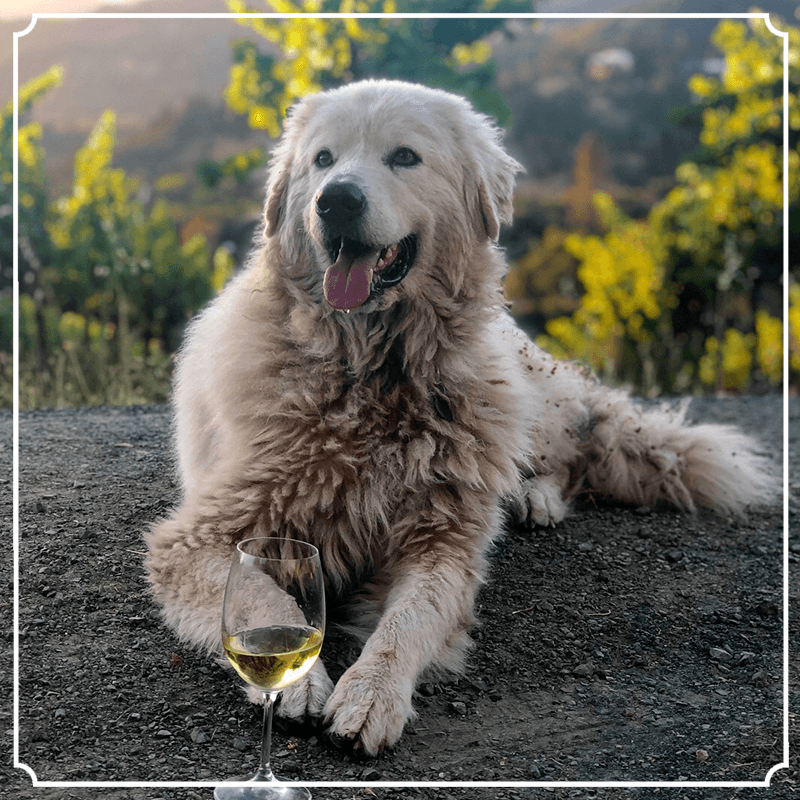
DOGS
Dogs
Man’s Best Friend! Dogs are allowed to tour the Castello with their owner so you never know what dogs you might see. Their long association with humans has led dogs to be uniquely attuned to human behavior and they are able to thrive on a starch-rich diet that would be inadequate for other animals. Dogs vary widely in shape, size and colors. They perform many roles for humans, such as hunting, herding, pulling loads, protection, assisting police and military, companionship and, more recently, aiding disabled people and therapeutic roles.
Dog Facts
- A dog’s nose print is unique, much like a person’s fingerprint.
- Dog’s have three eyelids.
- There are over 75 million pet dogs in the U.S.—more than in any other country.
- All dogs dream but puppies and senior dogs dream more frequently than adult dogs.
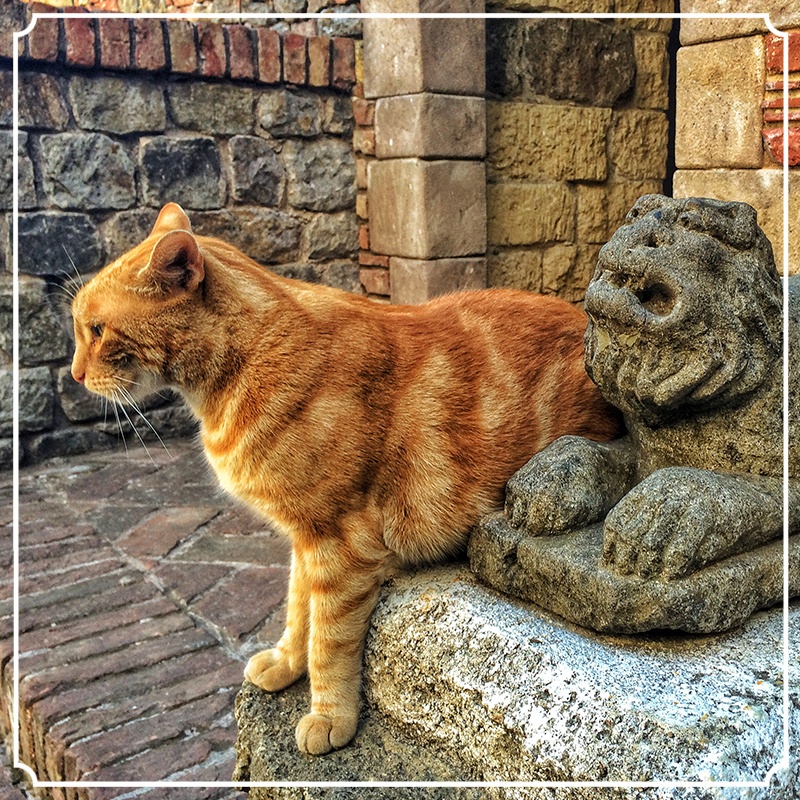
CATS
Cats
We have a few different Cats that you can occasionally see on the Castle grounds. As of 2017, the domestic cat was the second-most popular pet in the United States by number of pets owned, after freshwater fish, with 95 million cats owned. In the United Kingdom, around 7.3 million cats lived in more than 4.8 million households as of 2019.
Cat Facts
- Cats are believed to be the only mammals who don’t taste sweetness.
- Male cats are more likely to be left-pawed, while female cats are more likely to be right-pawed.
- Cats have nearly twice the amount of neurons in their cerebral cortex as dogs.
- Cats can spend up to a third of their waking hours grooming.
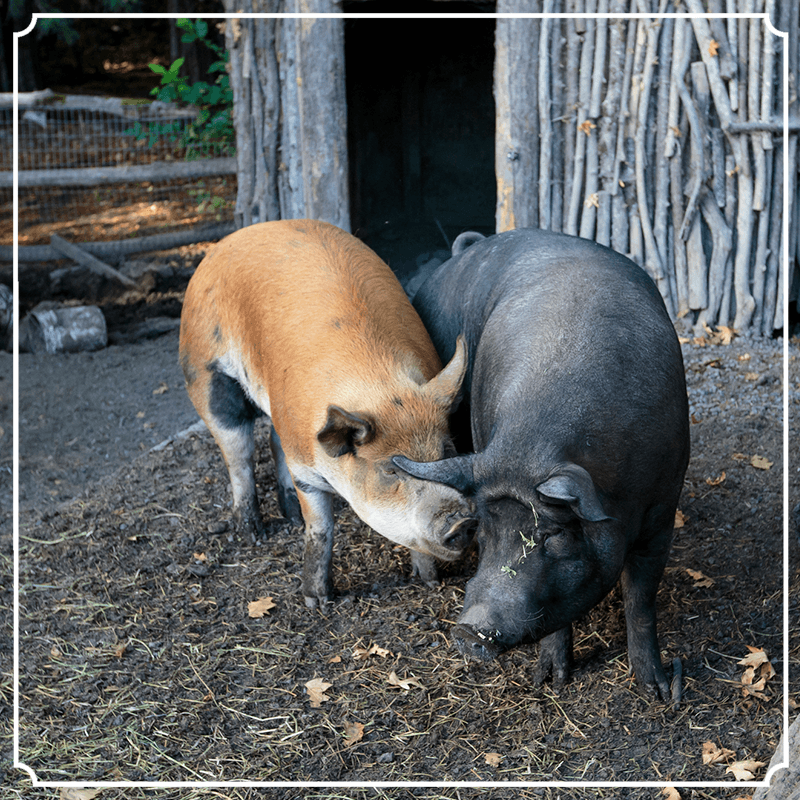
ROSEY & STINKEY
Rosie & Stinky
Meet Rosie & Stinky! With around 1 billion individuals alive at any time, the domestic pig is among the most populous large mammals in the world. Pigs are omnivores and can consume a wide range of food. Pigs are biologically similar to humans and are thus frequently used for human medical research.
Pig Facts
- They prefer to sleep nose to nose.
- Pigs are majorly intelligent, they are widely accepted as being smarter than young children of at least 3 years of age, dogs and some primates.
- Wild pigs play an important role in managing ecosystems and maintaining biodiversity. By rooting, and thus disturbing the soil, they create areas for new plant colonisation.
- Winston Churchill famously said that “Dogs look up to man. Cats look down to man. Pigs look us straight in the eye and see an equal.”
- Pigs have 15,000 taste buds! Humans have 9,000.
- Pigs drink up to 14 gallons of water every day.
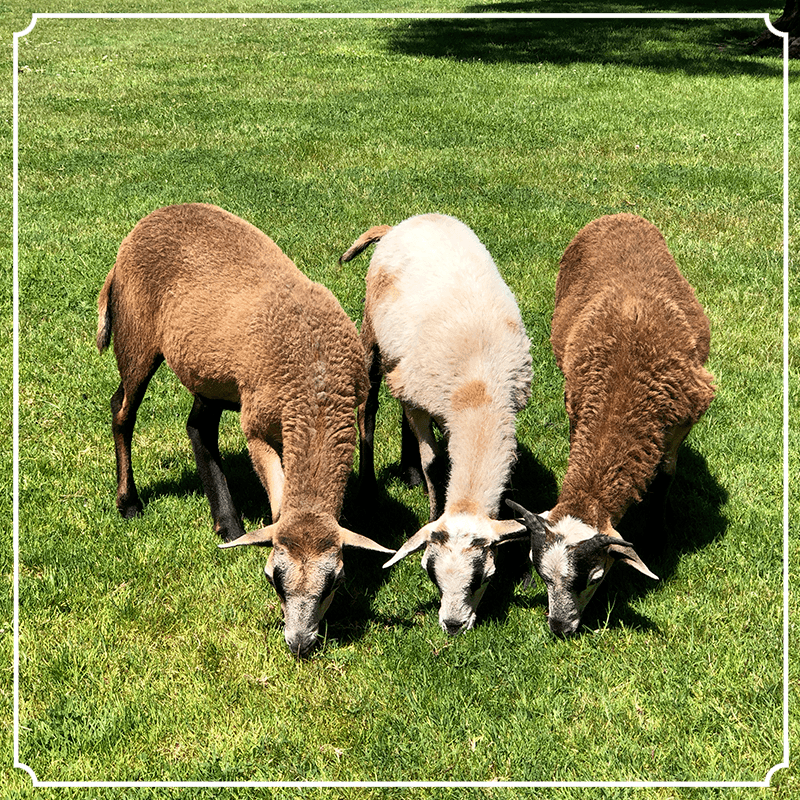
SHEEP
Sheep
Sheep are most likely descended from the wild mouflon of Europe and Asia; one of the earliest animals to be domesticated for agricultural purposes. A sheep’s wool is the most widely used animal fiber, and is usually harvested by shearing. Ovine meat is called lamb when from younger animals and mutton when from older adults. Sheep continue to be important for wool and meat today, and are also occasionally raised for pelts, as dairy animals, or as model organisms for science.
Sheep Facts
- Their wool will grow forever.
- In 2015, a sheep named Chris who was found in Canberra, Australia, unloaded 89-pounds of fleece.
- Sheep have rectangular pupils that give them amazing peripheral vision – it’s estimated their field of vision is between 270 and 320 degrees; humans average about 155 degrees
- Dolly was the first mammal to have been successfully cloned from an adult cell. She was cloned at the Roslin Institute in Scotland, and lived there until her death at six years old.
- George Washington, Thomas Jefferson and James Madison all raised sheep. In fact, Madison was sworn in wearing a coat spun from his sheep’s wool. Woodrow Wilson kept a flock at the White House during World War I to keep the grass trimmed as a cost-cutting measure and to show support for the war effort.
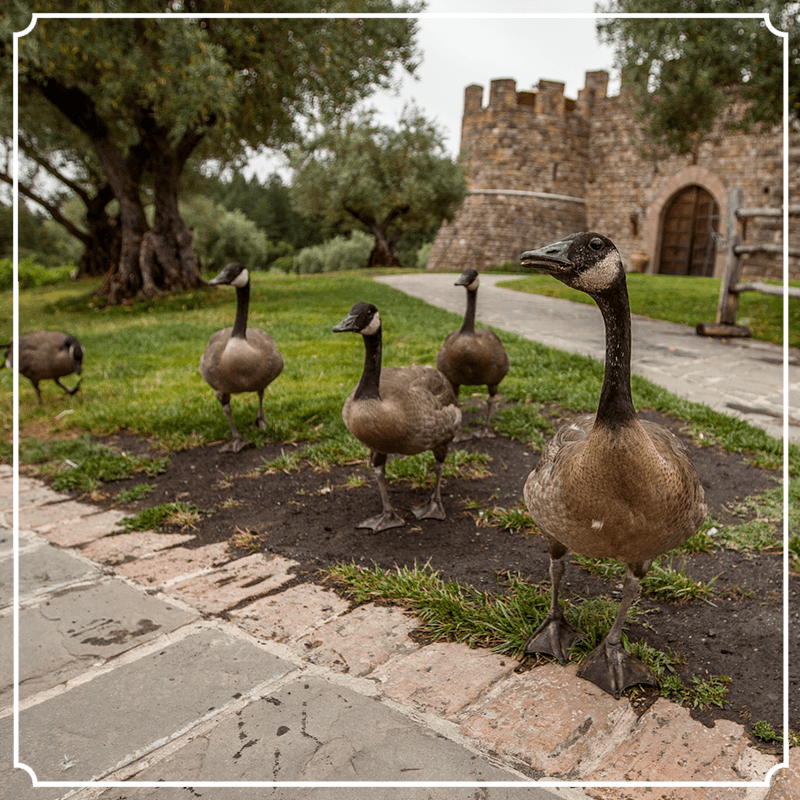
GEESE
Seasonal Geese
Depending on the season, you can catch a few different packs of Geese. Every Spring a group of the same Geese seem to return. In fact this has happened the last 6 years. This last year, their were even new baby Geese born at the Castle.
Geese Facts
- Goose is the term for female geese, male geese are called ganders. A group of geese on land or in water are a gaggle, while in the air they are called a skein.
- Geese were probably the first type of poultry domesticated by humans, over 3000 years ago in Egypt.
- Young often remain with their parents for their entire first year, especially in the larger subspecies.v
- Geese can live up to 20 years depending on species.


